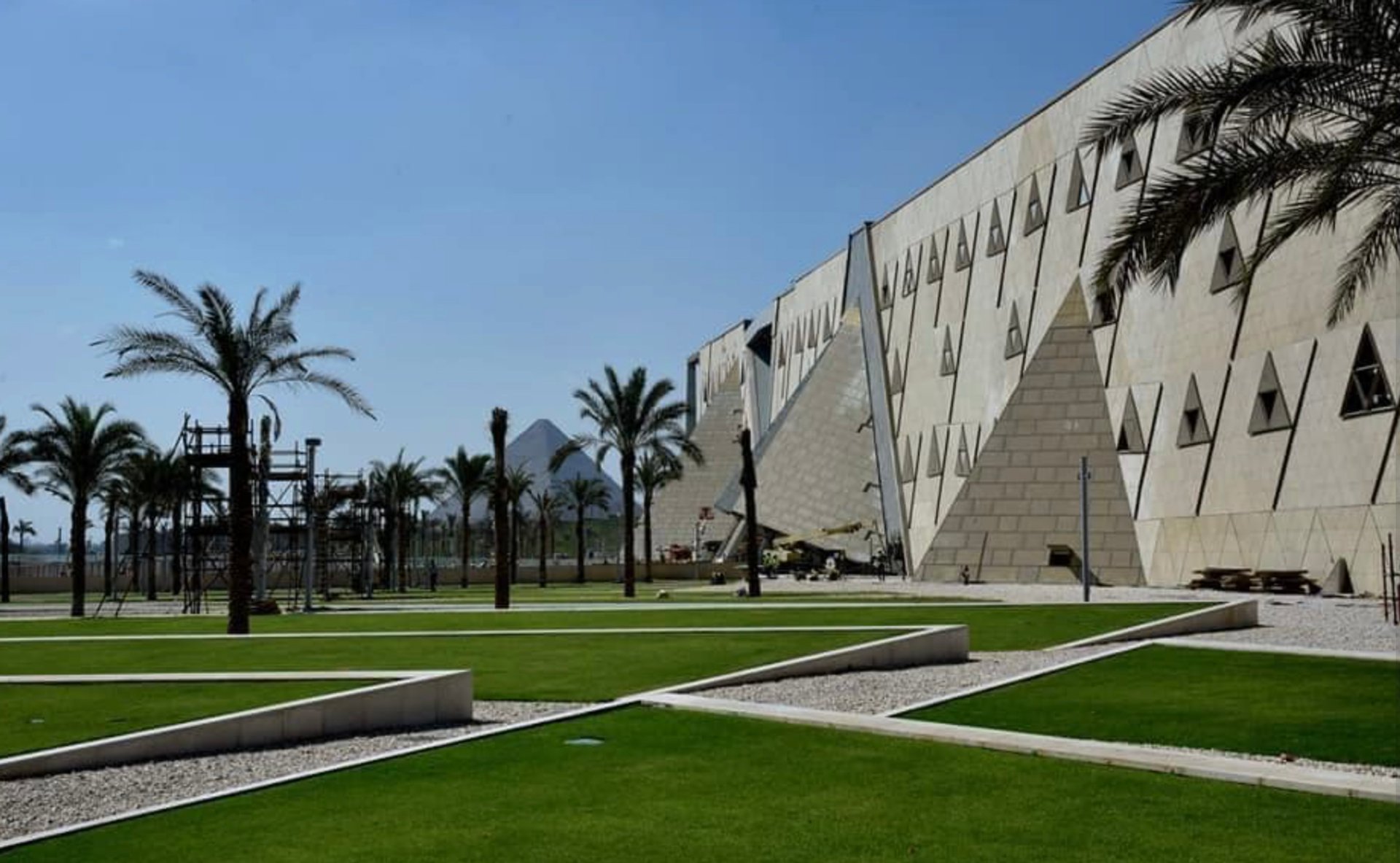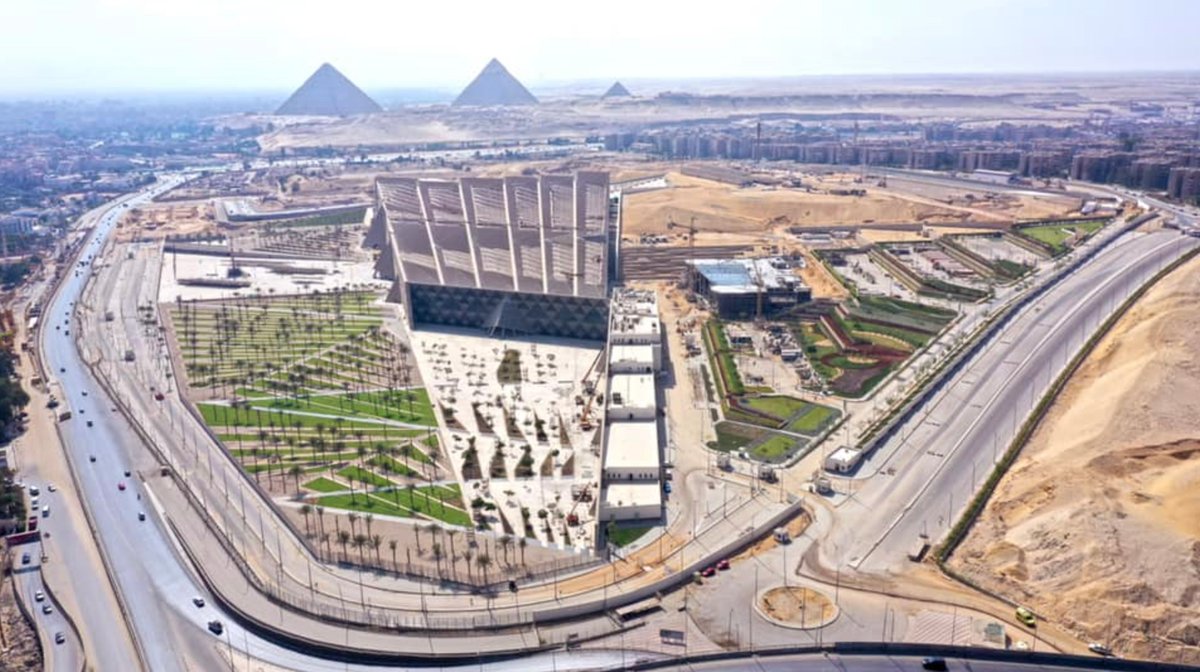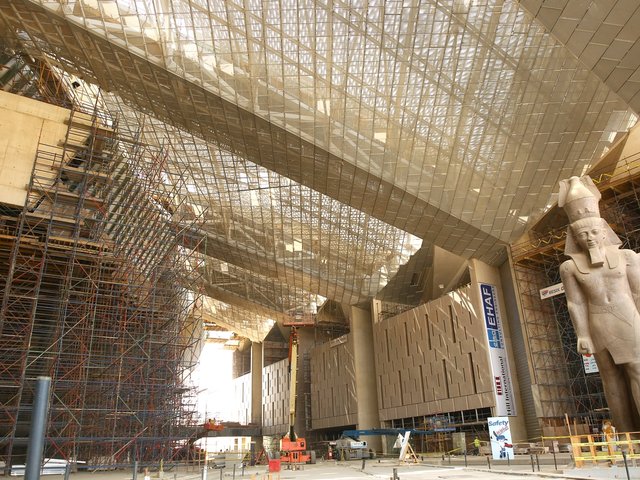Twenty years since the late Egyptian President Hosni Mubarak laid its foundation stone, the Grand Egyptian Museum (GEM) is inching closer to completion. A press release issued by Egypt’s Ministry of Tourism and Antiquities on 7 February gave oddly precise percentages to indicate progress. While 100% of the structural work, including the vast atrium and grand stairway, is now finished, the internal fittings were described as 99.8% complete, the outdoor areas 98%, the section dedicated to King Tutankhamun’s artefacts “more than 99%” and the main exhibition halls 96%. So far, more than 56,000 of an estimated 100,000 artefacts have been transferred to the site near the Pyramids of Giza.
At nearly 500,000 sq. m and with an expected cost of more than $1bn, the GEM will be the world’s largest museum dedicated to a single civilisation. The displays will show objects chronologically from prehistory to the Greco-Roman period and it will also bring together the entire collection of Tutankhamun’s treasures—more than 5,300 artefacts—for the first time since his tomb was discovered a century ago by the British archaeologist Howard Carter in the Valley of the Kings near Luxor.

The vast atrium and grand stairway, complete with its colossal statue of Ramses II, is now finished Photo: Ministry of Tourism and Antiquities, Egypt/Facebook
The Tutankhamun Gallery is described as the museum’s “jewel in the crown” on the website of Acciona, a Spanish infrastructure conglomerate whose Acciona Cultural Engineering subsidiary is working on the “technical development and museographic implementation” of the gallery and other spaces at GEM. According to the project director Nicolás Gutiérrez Martínez, the displays dedicated to the boy king are one of the most challenging elements. “Imagine working around one collection about one pharaoh that everyone knows. There is a lot of mystery and history. How do you present that?” he tells The Art Newspaper.
The answer has been light: Martínez describes the final presentation as “theatrical” with dramatic lighting that will make the ceiling look like a star-filled sky. Downlights will illuminate key objects in the displays. The aim is to create an atmosphere that captures the feeling of death emerging into a new beginning, in keeping with Ancient Egyptian beliefs about the afterlife. “It’s super cool!” Martínez concludes.

The outdoor areas of the GEM are now 98% complete, according to the Egyptian Ministry of Tourism and Antiquities Photo: Ministry of Tourism and Antiquities, Egypt/Facebook
Speculation on the opening date abounds but it seems likely that the museum will open in November, coinciding with the centenary of the discovery of Tutankhamun’s tomb on 4 November 1922. “If the coronavirus-related conditions are stable, then the [museum's] opening would be in the second half of the year,” Egypt’s tourism and antiquities minister Khaled el-Anany told ABC News in January. “We will be ready by the middle of this year… but we want to make sure that our guests can arrive in large numbers. We aim to invite presidents and kings from all over the world,” he added.
On the ministry’s Facebook page, many followers have asked for the GEM’s official opening date. The same reply has been given to all: “We will announce the opening when the date is set.”





